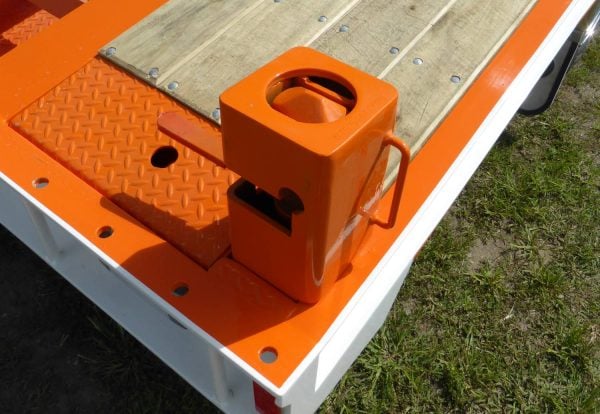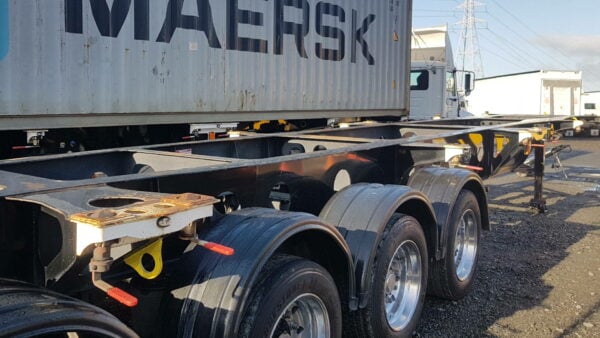Shipping goods around the world is made easy by the use of shipping containers which have standard sizes and can fit on ships, trains and trucks. It makes it possible for goods to be packed at the manufacturer, sealed for security and delivered to their final destination without ever being devanned (opened and changed to another transport mode). This allows sensitive loads to be transported without risk of tampering or theft.
Because the driver doesn’t know what’s in the container or how it’s been packed, this creates a risk.
How is a container attached to a truck?
A container has four cast slots, one in each corner. An ISO twistlock on the truck or trailer fits into each one of these locks, and the driver pushes the handle flush with the body to lock it.


Loading and the container’s centre of gravity
As ISO container locks are easy to operate and sturdy, the main risk to truck drivers is that they have no idea how the load has been loaded and whether it is still secured within the container. While they can specify which direction the container faces and (if the truck supports it), choose the best position for optimum axle loading, there is no way that the driver can tell where the centre of gravity is on the trailer and whether it will move.
A load with a high centre of gravity or one that can move around makes the truck much more at risk of rolling over while cornering. It’s advisable for drivers to do rollover prevention training so that they understand what techniques are required to reduce the risk.
Drivers also have to rely on the shipping documentation to be accurate in terms of the weight. This is not always the case, so a visit to a weighbridge is the only way to tell, and this costs the driver time and money, and delays delivery of freight.
What should drivers do when carrying containers?
- Full containers should be treated with caution
- If the truck or trailer doesn’t have scales (many sideloaders do), a visit to the weighbridge can establish axle loadings.
- Keep speeds in corners 10km/h below the posted advisory speed limit (the limit shown on the yellow signs)
- Leave additional distance when following vehicles to avoid having to make sudden manoeuvres.

